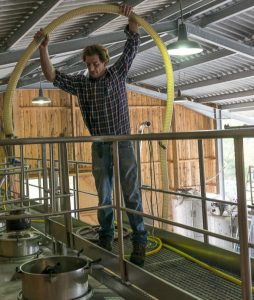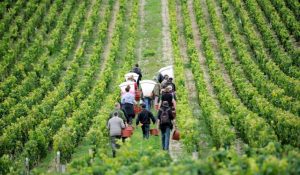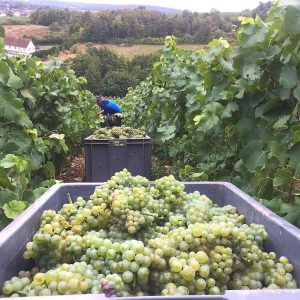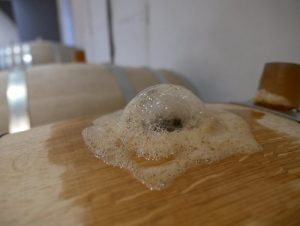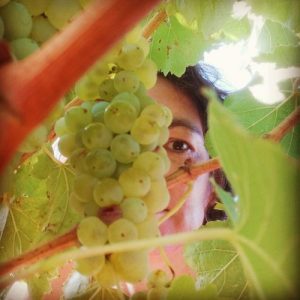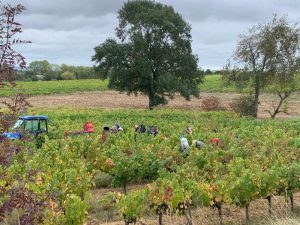Harvest Reports 2019
The 2019 harvest reports sont arrivés ! Read on for what our producers have to say.
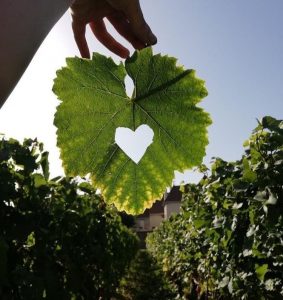
JURA
Valentin Morel
Harvest chez Valentin Morel took place from September 6th – 23rd. According to Valentin, the weather was sunny and perfect— almost too hot! “What was surprising about this year was that in waiting for the grapes to mature for harvest, the ones that already had a really high alcohol potential didn’t seem to have reached phenolic maturity at all, which led us to adjust the beginning of harvest to about a week prior, as we usually begin around September 10th,” says Morel. Valentin tells us that the vintage was marked by two major frosts (April 23rd and May 6th), followed by a heat wave and drought. “Old vines resisted pretty well— this wasn’t the case for the young vines, especially the Poulsard, which was burned. Thankfully, we had some saving rain at the beginning (and throughout) the month of August.”
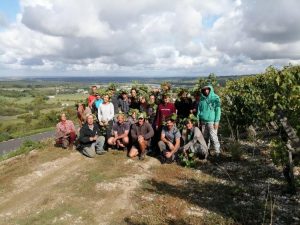
BURGUNDY
Olivier Morin
At Olivier Morin, harvest began on September 9th. “It’s early, but that’s becoming the norm,” he says. Frost chez Morin decreased his crop by a third, though an unusually dry and hot summer led to perfect conditions for healthy grapes. “The clusters reached a tremendous degree of ripeness, sugar concentration, and optimal acidity,” states Morin. “We harvested in very good weather— the heat even forced us not to harvest some afternoons!” Morin states that is 2019 wines have a superb balance between sugar, acidity, and minerality, and that the reds are showing a deep concentration, as well ask remarkable fruit-forwardness and acidity.
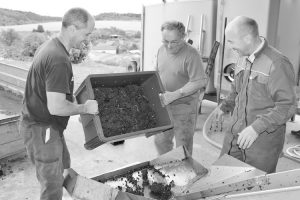
De Oliveira Lecestre
At Lecestre, harvest started on Saturday, September 14th and ended on Tuesday, September 24th. “We had great, hot weather throughout harvest,” reports Lecestre. “The 2019 vintage is very unique. Various climatic hazards at the beginning of the cycle (frost in April, hail in May), followed by pronounced drought had a great impact on the volume of fruit harvested.” Lecestre notes that flowering didn’t go very well, as there was abundant coulure (fruit set failure). Above all, 2019, was a quality over quantity vintage. “This vintage presents a great balance between acidity, minerality, and freshness. The quantities are smaller compared to the 2018 vintage, but still good through it all.”
Domaine Rougeot
At Domaine Rougeot, harvest began on September 12th and ended on September 20th, all of which was ‘done under a blue sky for these eight days.’ Although slightly hot at the beginning of harvest, the weather quickly turned crisp and refreshing, which lent itself to fresh and crunchy Pinot. “Qualitatively, 2019 is much better than the last few vintages,” says Rougeot. “We have smaller yields. White grapes were mature and supported by marked acidity, so balance was great.” Rougeot notes that 2018 was much more influenced by heat and sun, so the wines were less acidic. “This vintage is more similar to 2005 and 2015— a great and beautiful vintage in short.”

Vincent Dancer
“Harvest went very well, as the season was very conducive to growing quality grapes,” says Vincent Dancer. “Difficult flowering led to a dry summer, which made the harvest a bit weak in comparison to 2018.”
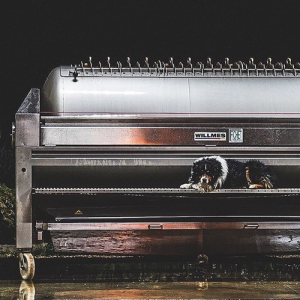
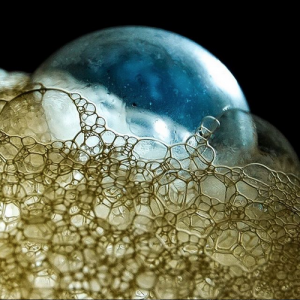
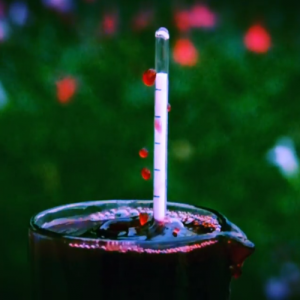
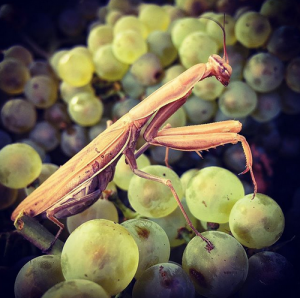
BEAUJOLAIS
Pierre Cotton
At Pierre Cotton, harvest began on September 10th and ended on September 21st. Throughout the 11 days of picking, the weather was very good, with seasonal averages around 25-30 C (77-86 F). Fruit ripened evenly across Cotton’s various plots, which made managing daily picks slightly difficult, but all was handled gracefully.

“We were quite lucky,” says Cotton. “Apart from one frozen parcel this winter (Beaujolais Le Pré), everything went very well. There was hail in southern Beaujolais, but not on our plots! A really great vintage for us.” Quantities were similar to the 2018 harvest (re: average hl / ha), and the quality of fruit was excellent (no rot, etc.) With regards to vinification, fermentations were all done spontaneously with native yeasts and fruit was pressed after 10-15 days of carbonic maceration (fermentations finished about a week afterwards). Wines are currently aging in foudres until spring/summer. “For us, it’s a beautiful vintage that is coming!”
CHAMPAGNE
Vadin Plateau
On Cumieres, harvest officially began on Friday, September 6th. “We hesitated for quite awhile, as my dad and I thought that this was a bit too early to begin harvest. The minimum to harvest (9% vol) was reached, but the phenolic maturity just wasn’t there. The juice was clearly lacking in taste- it was a difficult decision to make!”
After extensive reflection, the Plateaus began harvest on Tuesday, September 17th— a full 11 days after the general initial harvest date. “Our choice was wise, I think,” says Plateau, highlighting that his fruit showed exceptional aromatic richness. “We obtained very fruit-forward juices with degrees between 11 and 12%, characterized by good length and a nice acidity, which leads me to believe that this will be an extraordinary vintage.” Plateau looks forward to tasting their vins clairs to see if his expectations are indeed confirmed.
“As with every year, harvest is done with a good mentality and good mood… with the sun as a bonus!” Plateau exclaims. “We have always practiced traditional harvesting, as my grandparents and great-grandparents did. All of our gatherers are fed and housed!” Plateau notes that the team is pretty much the same year in and year out, some of whom have been coming for 30+ years, and they all enjoy meeting together to celebrate this special time of the season. “We’ve become a big family!”
Piollot Père & Fille
At Piollot Père et Fille, harvest started on September 6th and finished on the 14th. Jeanne Piollot describes little rain and cool mornings during harvest, which is ideal for getting grapes (and must) in good form. “Despite a very dry year with high temperatures, the amount of burned grapes wasn’t too bad,” says Piollot. “Vine training played a big role in the protection of the fruit,” she says, describing how keeping leaves on the vine to provide shade during many 40+ degree days was necessary. “We had a wonderful quality and quantity this year,” says Piollot. “Beautiful maturity and almost perfect condition— the 2019 harvest is one of the best we’ve had since converting to organic farming.”
Stéphane Regnault
“2019 was quite difficult in terms of vineyard work!” exclaims Stephane Regnault. “We started the season with four days of frost that greatly impacted 30% of the domaine, though this didn’t worry me too much, as the buds were barely broken and therefore still protected.” Despite the frost, Regnault still felt confident about the harvest to come, as the quantity and quality were both promising.
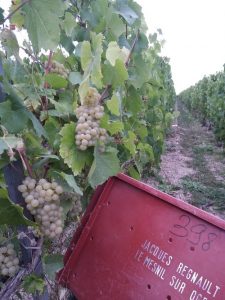
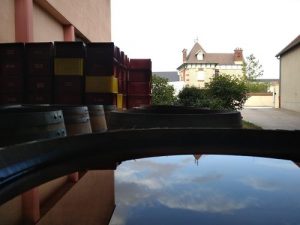
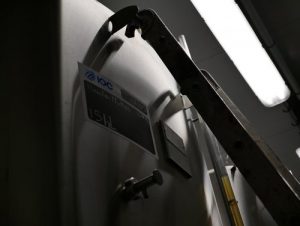
“Fortunately, the weather was very dry during flowering, which protected against mildew growth that was taking ground. It could’ve been serious!” Regnault notes that trellising was a little chaotic, temperatures then got hot, and vines were shooting inconsistently. “Then, the powdery mildew came with force… it was very difficult to stop. I lost 20 hectares in the battle, which were completely affected and therefore un-harvestable. Then, the month of August came and sunburn destroyed about 15 to 20% of what I had left.” Regnault summarizes that because of all of these factors, his harvest was very small, though the grapes he was left with were beautiful. “Native fermentations went very well. Now, all we can do is wait for the wines to evolve!”
LOIRE
Fontaine Fougères
“A small harvest, but extremely beautiful!” exclaims Sandrine Deschamps. This photo was taken from La Fontaine aux Fougères and Domaine du Chêne Arrault in the heart of the Loire Valley.
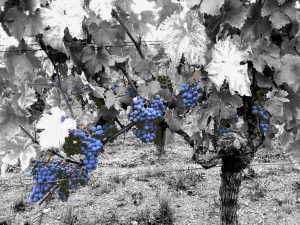
Domaine Courtault Tardieux
Simon Tardieux recalls fresh weather throughout April and early May. The estate’s anti-frost system broke down, so candles were lit four times during the morning while it was in repair. “Only a few buds were frozen,” states Tardieux. The first half of June was marked by some storms, then valves were finally closed on June 15th— in other words, no more water until harvest (aside from rain). July brought excessive heat, which made water stress set in. “The vines resisted, but many leaves and some grapes were starting to burn,” says Tardieux. A rather ‘classic’ August (warm and sunny) allowed grapes to mature normally, and the first day of harvest took place on September 5th. With regards to reds, Tardieux was left with about 50% of his normal crop, which was a result of dramatic climatic events during the growing season. Harvest ended on September 27th and Tardieux finds the quality to be better than he expected. “At both an analysis and tasting level, fermentations are going well and we may soon have an idea of the typicity and balance that the vintage will bring. We will see!”
NORTHERN RHÔNE
Aurélien Chatagnier
“All in all, we have a lot of color,” says Aurélien Chatagnier. “Some plots suffered from drought, there was a drop in the yields. However, 2019 has shown a nice acidity, despite high temperatures.” Chatagnier began harvest on Friday, September 13th and finished on Thursday, October 3rd. The weather was pretty good, so Aurélien let the grapes hang a bit longer to reach optimal maturity.
LANGUEDOC-ROUSSILLON
Karine & Nicolas Mirouze – Château Beauregard Mirouze
“2019 is a new vintage for us,” explains Karine Mirouze. “A rainy autumn led to a mild and dry winter, followed by a cold spring (rainy April), and thankfully, a very dry and hot summer.” Veraison in August was about 10-15 days later than expected, which led to accelerated maturation at the end of the month. “We had to be ready, and we were, because if we had waited, the acidity of the whites would have drastically dropped,” says Mirouze. At the estate, harvest began September 3rd and finished on October 7th. Warm weather was marked by rain and helped to offset drought. “2019 gave us a very pretty harvest in terms of quantity and quality. The year is focused on freshness and balance, and its potential is interesting (not too high in alcohol, good acidity, and restrained tannins).”
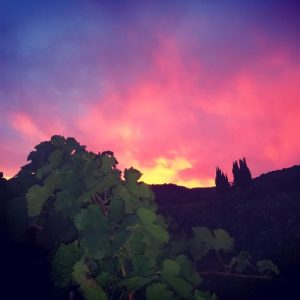
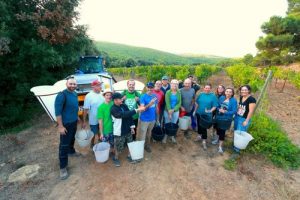
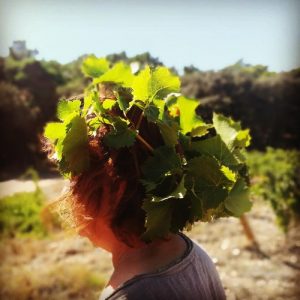
2019 also brought some new changes to the estate, including the Mirouzes official conversion to biodynamic certification (Demeter). The duo also created a naturally sparkling wine, as well as a 25-day macerated skin-contact wine. Mirouze also notes that growers who have been irrigating their vines within the region have now been restricted, due to drought-related issues. “This created a lower-yielding harvest (between 30-50%) for many growers, as well as unreached maturity” she explains. “We make the choice not to irrigate, but rather to put emphasis on creating lively, airy soils for deep-rooting vines. This year, we’ve had no issues with quality or quantity despite not irrigating— this helped reinforce our choices and encourages us to continue farming the way that we do.”
Mas des Cabres
Hot weather in June and August, followed by drought, greatly influenced harvest at Mas de Cabres. “In the cellar, white and rosé juices were quite aromatic and have maintained a good liveliness despite the drought,” says the winery. “With regards to the reds, both color and tannin were extracted quickly in vat.” The estate sees a decent potential for the 2019 vintage, similar to that of 2013, 2017, and 2018.
Domaine de Mouscaillo

SOUTHWEST
Château de Rhodes
Harvest at Château de Rhodes began on September 5th— a few days later than normal. As per usual, Mauzac for the winery’s méthode ancestrale sparkling came first, then the rest of the white grapes were harvested the following week under summerlike conditions. Duras was also harvested this week, as potential alcohol levels were already high and fruit was very aromatic. “The poor rains on Sunday, September 22nd helped revive the maturity of ‘later’ varieties. We began harvesting our Syrah parels on the 23rd of September, with the last ones picked on September 30th,” says Château de Rhodes. Braucol and Prunelart were picked between the 7th and 10th of October. “At the end, our harvest lasted ten days less than that of 2018,” the estate explains.
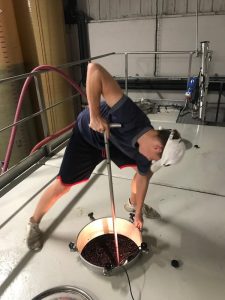
“The condition of our grapes was perfect for all grape varieties, which allowed us to use little sulfur at bottling,” says Château de Rhodes. “Although ‘Loin de l’Oeil’ was disappointing in quantity, the other grapes had a normal to good yield— especially Mauzac and Duras, which were generous.” Heatwaves and drought did not compromise yields or aromatics, and the kinetics of fermentation were easy and fast.
BORDEAUX
Château des Antonins
